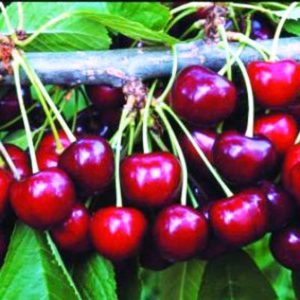Cherry Trees in the Home Garden
go.ncsu.edu/readext?575589
en Español / em Português
El inglés es el idioma de control de esta página. En la medida en que haya algún conflicto entre la traducción al inglés y la traducción, el inglés prevalece.
Al hacer clic en el enlace de traducción se activa un servicio de traducción gratuito para convertir la página al español. Al igual que con cualquier traducción por Internet, la conversión no es sensible al contexto y puede que no traduzca el texto en su significado original. NC State Extension no garantiza la exactitud del texto traducido. Por favor, tenga en cuenta que algunas aplicaciones y/o servicios pueden no funcionar como se espera cuando se traducen.
Português
Inglês é o idioma de controle desta página. Na medida que haja algum conflito entre o texto original em Inglês e a tradução, o Inglês prevalece.
Ao clicar no link de tradução, um serviço gratuito de tradução será ativado para converter a página para o Português. Como em qualquer tradução pela internet, a conversão não é sensivel ao contexto e pode não ocorrer a tradução para o significado orginal. O serviço de Extensão da Carolina do Norte (NC State Extension) não garante a exatidão do texto traduzido. Por favor, observe que algumas funções ou serviços podem não funcionar como esperado após a tradução.
English
English is the controlling language of this page. To the extent there is any conflict between the English text and the translation, English controls.
Clicking on the translation link activates a free translation service to convert the page to Spanish. As with any Internet translation, the conversion is not context-sensitive and may not translate the text to its original meaning. NC State Extension does not guarantee the accuracy of the translated text. Please note that some applications and/or services may not function as expected when translated.
Collapse ▲Let’s talk about cherries. Here in western NC we all grew up with the standard pie cherry trees that grew in Grandma’s backyard. I have great memories of picking those tart cherries during the summer and being rewarded with my Grandma’s cherry pies. You just can’t beat those kinds of memories!
Those memorable cherries were most likely Montmorency cherries, an old favorite that has been around for many years. It is a tart cherry and grows well in our climate. Montmorency is self-fertile so you only have to plant one to get a good harvest for you and the birds. Ripening in late June, this old favorite has a bright red color with yellow flesh and a tart, tangy flavor.
Sweet cherries are a different story. Not as common in our area, sweet cherries can grow well here, nonetheless. Black Tartarian is a popular variety and is known for its almost black fruit and sweet, rich flavor. Ripening in early summer, it does need a pollinator of another sweet cherry. Bada Bing is great choice as a pollinator for Black Tartarian. An improved variety of the famous Bing cherry, Bada Bing ripens in late June with a dark red skin and firm, sweet fruit.
Because of the high sugar content, sweet cherries can split during hot or wet weather. Bada Bing is resistant to cracking which makes it a great addition to the garden. Just remember that you need 2 different sweet cherries for pollination.
As with most fruit trees, cherries require annual pruning to ensure a good harvest. They also need a sunny, well-drained location and ample space. They are not dwarf trees. If you see some cherry pies in your future, any one of these trees would make a great addition to the garden.





